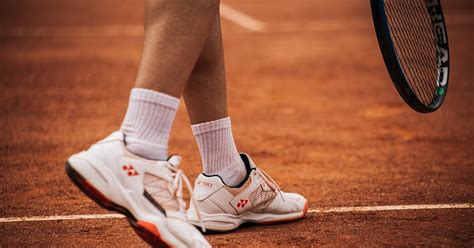Explore the rich history and evolution of lacrosse, from its origins and key rule changes to cultural influences and future trends.Lacrosse, a sport rich in history and tradition, has undergone a remarkable transformation since its inception. From its roots as a Native American game to its current status as a globally recognized sport, lacrosse has evolved significantly over the years. This article delves into the key phases of its evolution, exploring the origins, pivotal rule changes, and advancements in equipment that have shaped the game. We’ll also examine the cultural influences that have impacted lacrosse and look ahead to emerging trends that promise to define its future. Join us as we take a closer look at the vibrant journey of lacrosse, celebrating its past while anticipating its exciting future.
The Origins Of Lacrosse: A Historical Overview
Lacrosse has a rich and vibrant history that dates back centuries, originating among Native American tribes in North America. This sport was not merely a game; it held significant cultural and spiritual importance, serving as a method of training for warriors and a means of resolving conflicts between tribes. Early Lacrosse was known by various names, such as “Baggataway” among the Algonquin and “Tewaarathon” among the Haudenosaunee (Iroquois) peoples.
The early versions of the game were played with minimal equipment, often using sticks fashioned from wood and animal skins, and the goals were rudimentary at best. Matches could involve hundreds of players and span several days, showcasing not only athletic skill but also teamwork and strategy.
As Europeans began to colonize North America in the 17th century, the sport caught their attention. French Jesuit missionaries were some of the first to document the game, referring to it as “La Crosse” due to the resemblance of the sticks to a crosier, or bishop’s staff. This interaction with European settlers contributed to the sport’s gradual transformation as it began to adopt new elements and rules.
By the mid-19th century, Lacrosse began to evolve into a more organized sport, with standardization of rules and the introduction of a 10-player format. This era marked significant changes, as teams were formed, and the game became a prominent collegiate sport in Canada and the United States.
The important emphasis on strategy and teamwork persists in modern versions of Lacrosse, yet as we explore the evolution of the game, it’s clear that its roots deeply connect to cultural identity and community spirit. Understanding the origins of Lacrosse provides essential context for appreciating its journey through history and the changes it has undergone to reach its current form.
Key Rule Changes That Shaped The Game’s Evolution
The evolution of lacrosse has been significantly influenced by various rule changes throughout its history. These modifications have not only impacted the gameplay but have also shaped the overall structure and culture of the sport. Below are some key rule changes that stand out in the The Evolution of lacrosse:
| Year | Rule Change | Impact |
|---|---|---|
| 1867 | Introduction of the first formal rules | Standardized play and established a framework for future rules. |
| 1931 | Establishment of the three-second rule | Improved safety and reduced aggressive play by limiting defenders’ time on the ball carrier. |
| 1970s | Creation of the face-off rule | Enhanced fairness in the game’s start and restart after stoppages. |
| 2000s | Implementation of the shot clock | Encouraged faster-paced gameplay, promoting offensive strategies. |
| 2016 | Adoption of the body-check rule adjustments | Improved player safety, addressing concerns over head injuries. |
These rule changes reflect the ongoing process of refinement in the sport, as leagues and governing bodies work to balance tradition with the need for safety and viewer engagement. Each modification marks a reflective point in the ongoing The Evolution of lacrosse, ensuring the sport adapts to the needs of players and fans alike.
The Evolution Of Equipment: From Wooden Sticks To Modern Gear
The equipment used in lacrosse has undergone significant transformation since the inception of the game. In the early days, players relied on handcrafted wooden sticks and simple, minimalistic gear. These wooden sticks, often made from ash, were heavier and less maneuverable compared to the sophisticated designs we see today. The characteristic deep pocket, integral for ball retention, was also quite different from the modern stringing techniques now used.
As the sport gained popularity, innovations began to sprout in response to both player performance needs and safety standards. The introduction of synthetic materials in the 1970s marked a turning point, leading to lighter and more durable stick designs. Today’s sticks are typically made from composite materials, offering enhanced flexibility and strength, which allow players to execute more complex maneuvers and shots.
Protective gear has also evolved remarkably. Early players donned very minimal protective equipment, often leading to serious injuries. Over time, regulatory bodies recognized the need for improved safety measures, leading to the development of advanced helmets, padded gloves, and body armor, providing players with the necessary protection while maintaining mobility on the field.
Another crucial aspect of the evolution of lacrosse equipment is the introduction of specialized gear aimed at different player positions. Attackers, midfielders, and defenders all utilize tailored stick lengths and shapes to enhance their specific gameplay strategies. This level of customization reflects the sport’s growing complexity and the nuanced styles of play that have emerged through the years.
In the realm of goalkeeping, advancements have led to the creation of larger, more protective goalie sticks, alongside well-designed helmets that ensure safety while offering maximum visibility and comfort. The current landscape of lacrosse equipment epitomizes the evolution of both sports technology and an understanding of player safety, allowing athletes to compete at higher levels than ever before.
As we look to the future, it’s clear that the equipment will continue to evolve, driven by advancements in materials science and a deeper understanding of player performance and safety. This progressive journey reflects the evolution of lacrosse, as it adapts to the needs and aspirations of its ever-growing community.
How Cultural Influences Altered The Evolution Of Lacrosse
The game of lacrosse has been shaped significantly by various cultural influences throughout its history. Initially played by Native American tribes, lacrosse was deeply rooted in their traditions and served multiple purposes, including ritual, training, and community bonding. As the sport transitioned into a more mainstream pastime, particularly in North America, these cultural components began to evolve.
One of the most notable changes has been the growing globalization of The Evolution of lacrosse. As the sport gained popularity outside of Indigenous communities, influences from different cultures started to emerge. For instance, Canadian influences brought innovations in playing style and strategy, incorporating unique techniques that made the game more dynamic. As lacrosse spread to nations like Australia and England, regional adaptations began to take form, blending local sportsmanship with the established rules of the game.
The role of media and advertising has also transformed the cultural landscape of lacrosse. The sport’s marketing strategies highlight its connection to various communities, showcasing athletes from diverse backgrounds. This not only increases visibility but also helps foster inclusivity in a sport that was once more homogeneous. The incorporation of cultural storytelling through promotional content has become an important aspect of lacrosse’s identity as it continues to grow globally.
Moreover, the rise of professional leagues and tournaments around the world has introduced new cultural narratives into the game. This professionalization has encouraged a convergence of styles and techniques, leading to a richer, more intricate version of lacrosse that resonates with fans and players from different backgrounds.
The evolution of lacrosse reflects the blend of multiple cultural influences that have shaped its identity over the years. Understanding this intertwining relationship not only enriches the appreciation of the sport but also highlights the importance of cultural diversity in its continued development.
The Future Of Lacrosse: Trends In The Evolution Of The Sport
As we look ahead, the The Evolution of lacrosse is poised to embrace several exciting trends that will shape the sport’s future. These trends demonstrate how lacrosse is responding to changes in society, technology, and player preferences.
One significant trend is the growing emphasis on inclusivity and accessibility. Organizations are increasingly focused on making lacrosse more available to diverse communities. Programs aimed at young athletes from various backgrounds are vital for spreading interest in the sport. This shift is not only expanding the player base but also enriching the cultural tapestry of lacrosse.
Technological advances are also playing a critical role in the sport’s future. From equipment innovation to enhanced training methodologies, technology is enhancing how players prepare and compete. Wearable technology, smart lacrosse sticks, and software for performance analysis provide athletes with valuable insights to improve their game.
Moreover, as professional leagues expand and media coverage increases, the popularity of lacrosse is expected to rise exponentially. This growth will likely fuel investment in grassroots initiatives, ultimately generating a more robust pipeline of talent. Increased visibility can also inspire young players to pursue lacrosse more seriously.
The evolution of coaching strategies is underway, with a greater focus on player well-being, mental health, and holistic development. Coaches are using sports psychology and tailored training regimens to ensure that athletes perform at their best while also maintaining a healthy balance in their lives.
The future of lacrosse is bright, marked by significant changes driven by inclusivity, technology, visibility, and coaching innovations. As these trends continue to unfold, they will undoubtedly contribute to the ongoing evolution of this dynamic sport.
Frequently Asked Questions
What are the origins of lacrosse?
Lacrosse originated from Native American tribes in North America, where it was played as a ceremonial game and a means of resolving conflicts.
How has the equipment used in lacrosse changed over the years?
Over the years, lacrosse equipment has evolved from simple wooden sticks and animal-hide balls to advanced composite materials and more protective gear to enhance player safety and performance.
What are some significant rule changes in lacrosse history?
Significant rule changes include the introduction of the shot clock in professional lacrosse, which increased the pace of the game, and the establishment of body checking rules to ensure player safety.
How has the popularity of lacrosse evolved?
Lacrosse has seen a surge in popularity, particularly in the United States, where it is now one of the fastest-growing sports at both youth and collegiate levels.
What role does technology play in modern lacrosse?
Technology plays a crucial role in modern lacrosse, with advancements in training tools, analytics for performance evaluation, and innovations in gear design enhancing the overall game experience.
How does the evolution of lacrosse reflect cultural changes?
The evolution of lacrosse reflects cultural changes by transitioning from a tribal game with spiritual significance to a mainstream sport enjoyed by diverse populations and recognized in international competitions.
What future trends could we see in the sport of lacrosse?
Future trends in lacrosse may include further integration of technology, increased emphasis on player safety, and continued growth in participation across various demographics.









